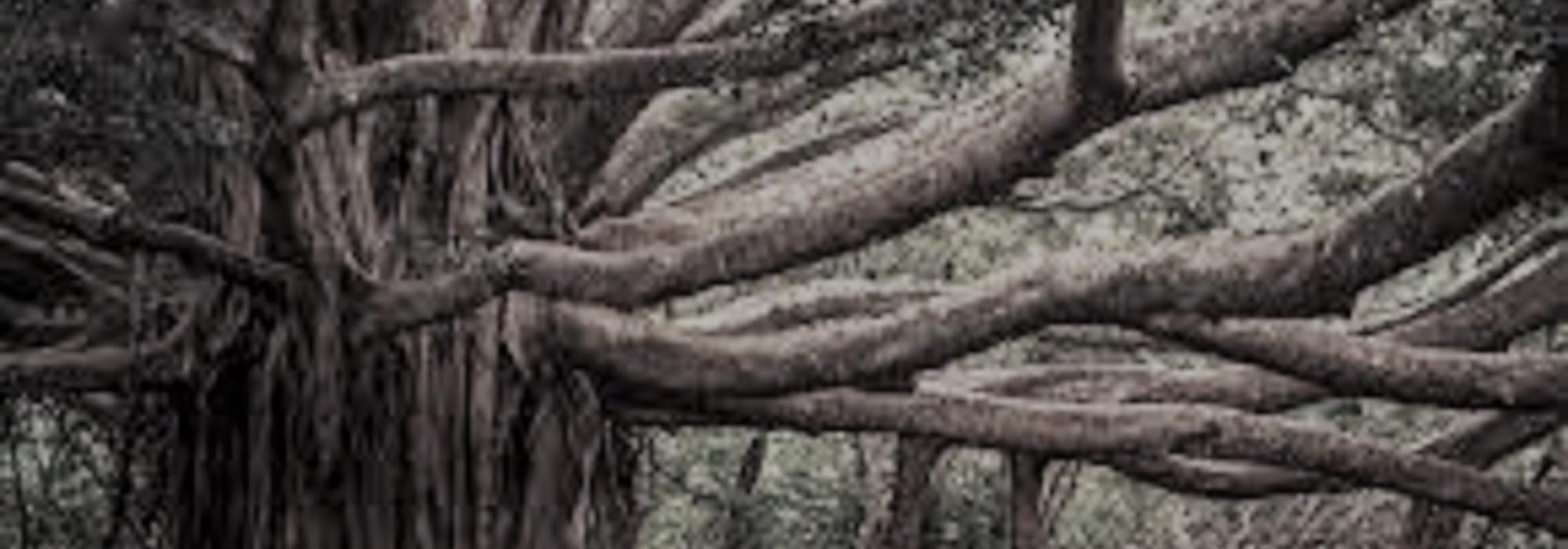In these verses Vyāsa has succinctly described the central focus of his poem and the nature of its characters. This is the way of great poets: they present the essence of the story upfront and then go on to narrate how it evolves. Lesser poets present the story in bits and pieces, intending to keep the readers hooked till the end. They sometimes stretch this technique to extreme limits, thus stripping the story of suggestive value and rendering it less enjoyable. A work bereft of poetic suggestion does not invite readers to revisit it.
Vyāsa here tells us the best way to develop characters. The poet should introduce their seminal traits at the outset and later weave the story in a manner that reveals how these traits play out – through various sandhis, avasthās and arthaprakṛtis. Character development entails an effective, suggestive narration of how a person’s cardinal traits reveal themselves in various circumstances, both conducive and adverse.
Two exalted metaphors encapsulate this truth:
दुर्योधनो मन्युमयो महाद्रुमः
स्कन्धः कर्णः शकुनिस्तस्य शाखाः।
दुःशासनः पुष्पफले समृद्धे
मूलं राजा धृतराष्ट्रोऽमनीषी॥
युधिष्ठिरो धर्ममयो महाद्रुमः
स्कन्धोऽर्जुनो भीमसेनोऽस्य शाखाः।
माद्रीसुतौ पुष्पफले समृद्धे
मूलं कृष्णो ब्रह्म च ब्राह्मणाश्च॥ (१.१.६५–६)
Duryodhana is a mighty tree of fury. Karṇa is its stem, Śakuni its branch, Duśśāsana its flower and flower. The unwise Dhṛtarāṣṭra is its root.
Yudhiṣṭhira is a mighty tree of dharma. Arjuna is its stem, Bhīma its branch, Nakula-Sahadeva its flower and fruit. The roots of this tree are Kṛṣṇa, Vedic wisdom and the wise.
The poet has wonderfully embedded the entire epic within these metaphors. Through these, he has given us the correct perspective to view his work. Ānandavardhana, the great literary critic, opines that a true figure of speech is that which bolsters the absolute suggestion (prabandha-dhvani) of a composition. His observation has been rendered true at the very beginning of the Mahābhārata.
At the end of the Mahābhārata, Vyāsa once again presents an overview of the major characters. This time through the eyes of Yudhiṣṭhira. It is indeed a profound, poignant picture. When Yudhiṣṭhira ascends to svarga in his mortal body, he does not find his wife and brothers there. Instead, he sees Duryodhana and party and turns furious. Nārada, Indra and other deities allay his surging sentiments.
This is the implied substance of the episode: Love and resentment arise when we view through mortal eyes. They do not arise when we view through ‘divine’ eyes. Svarga has no place for human likes and dislikes. One should take a dip in the Devagaṅgā, cast off mortal bonds and make way for divine sensibilities. Yudhiṣṭhira does not agree to this. He learns that his people are in naraka and immediately resolves to go there. He prefers naraka to svarga because that is where his people are. When the deities come to him, naraka turns into svarga. Later when he takes a dip in the Devagaṅgā, all his people appear before him in their original forms, happily ensconced in svarga. He must have felt delighted seeing them. But the poet does not record his happiness! He merely narrates what Yudhiṣṭhira saw and retires.
A profound suggestion lies hidden here. Love and hatred arise when we perceive men and women in a poem as actual people, failing to look at them as characters. Confusing ‘personal emotion’ for ‘art emotion’ is a sure sign of aesthetic immaturity. If we perceive men and women in a poem as characters—as we ought to—their virtues, blemishes, likes, dislikes and all other aspects of personality become relishable. We then get to experience aesthetic relish in ample measure and in the process develop an insight into various aspects of life. In a manner, this amounts to rising above the mortal frame.
One of the Sanskrit words for deities is sumanāḥ. Our tradition largely considers manas on par with hṛdaya. And in this sense, deities (sumanasaḥ) are similar to connoisseurs (sahṛdayāḥ). Herein lies the secret of crude, unpleasant feelings such as fear, anguish, fury and disgust metamorphosing into relishable rasas. This episode informs us that the metaphorical trees representing the good and bad are both equally enjoyable in the plane of rasa. This is indeed an exalted state. The poet here records a moral value that comes packaged with aesthetic enjoyment. He tells us that Duryodhana and his ilk were in svarga only temporarily and that they were soon relegated to naraka for eternity. The moral instruction does not seem preachy or off-putting because it comes as a part of an enjoyable poetic episode.
Because the Mahābhārata contains such enjoyable episodes aplenty, Vyāsa avers that it is an inexhaustible fount of inspiration. Even great poets drink deeply from it (1.2.241). This proclamation might seem a little stretched on the surface; but it is the truth. That is the reason why Kṣemendra reserves the highest praise for Vyāsa when he calls him a ‘universal inspiration,’ bhuvanopajīvya (Kavikaṇṭhābharaṇa, 2.1).
















































